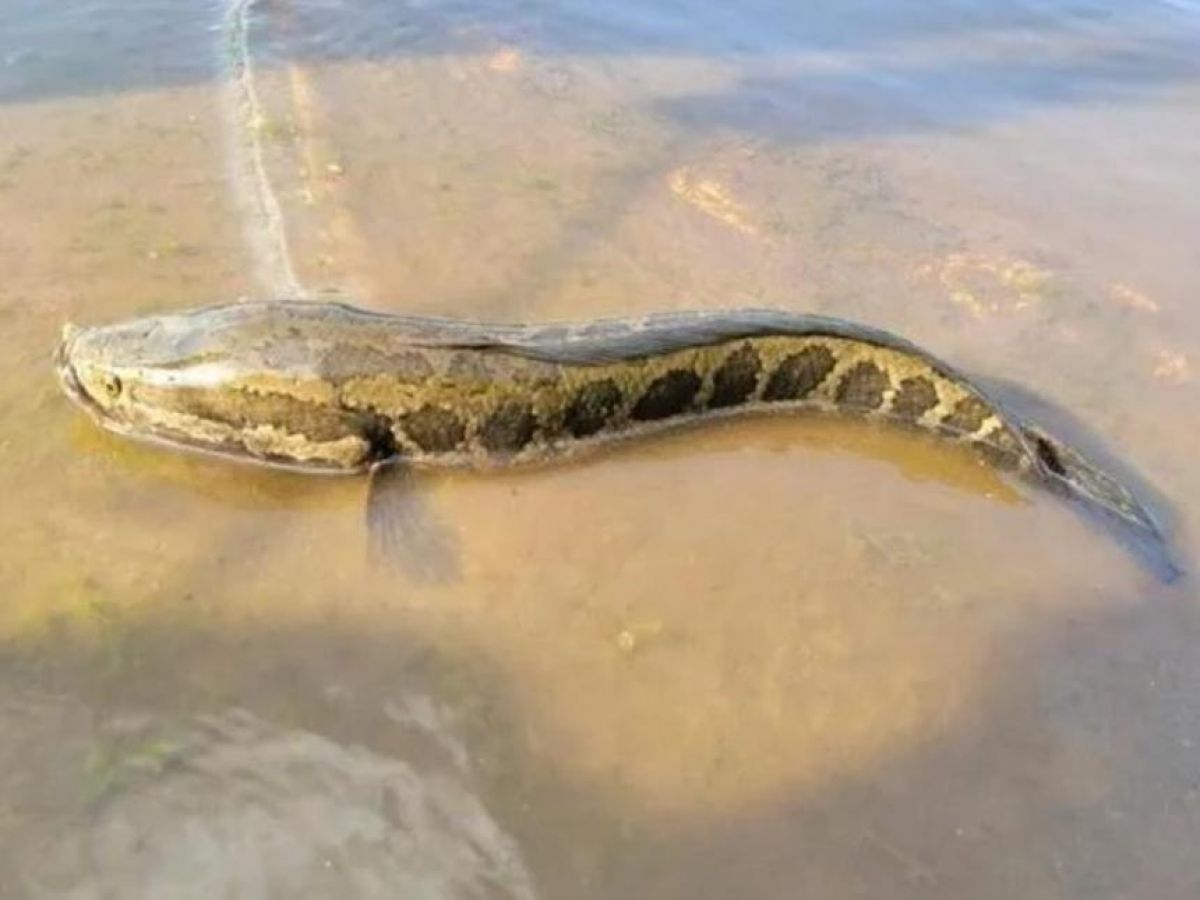A fish built for the margins
The northern snakehead is a remarkable and deeply troubling invader. Native to Asia, it has adapted to breathe air, allowing it to survive out of water as long as its skin stays moist. That unusual physiology lets it wriggle across wet ground and exploit new habitats.
In Missouri, biologists recently confirmed multiple finds, including a fish caught on May 25, 2024. To the angler’s astonishment, the fish remained alive on the sidewalk, underscoring its terrestrial endurance. Such traits give snakeheads a mobility and persistence edge over many natives.
A voracious predator with room to grow
The species, Channa argus, reaches up to one meter in length and can weigh around five kilograms. Its wide mouth and rows of small, sharp teeth let it consume anything that fits, from fish and amphibians to invertebrates. In crowded waters, that appetite can rapidly reshape food webs and drain local prey.
Without established natural predators in many invaded regions, snakeheads can dominate resources. They compete aggressively for habitat, pushing native species toward the margins. The ripple effects can alter community structure and reduce ecological resilience.
Reproduction that outruns containment
Female northern snakeheads can release up to 50,000 eggs as many as five times per year. That extraordinary fecundity fuels fast population growth and frequent local outbreaks. Once established, removal becomes costly and often partial.
Their parental care and site fidelity further boost survival of young. In connected waterways, successive cohorts can expand range quickly, leapfrogging control zones. Every missed detection becomes a potential source for new colonies.
Transatlantic alarms
The United States and the European Union view this fish as a rising threat. The IUCN notes that the species has been widely introduced beyond its natural range. Within the EU, it appears on the list of invasive alien species of concern, reflecting biodiversity and economic risks.
“This fish rewrites the rules of freshwater invasion, blending air-breathing resilience with predator efficiency.” That stark assessment captures the problem faced by managers on both continents. Snakeheads challenge conventional assumptions about barriers that separate water from land.
What authorities are doing
Agencies are intensifying monitoring, focusing on high-risk habitats and transport nodes. Environmental DNA and targeted surveys help detect early incursions before populations explode. Public education campaigns aim to boost awareness and prompt rapid reporting.
Cross-border coordination is crucial, because rivers and trade pathways ignore jurisdictions. Shared data, harmonized rules, and joint response planning reduce gaps that invaders exploit. Strong enforcement against illegal releases remains a core priority.
How the public can help
Citizens, anglers, and boaters can make a decisive difference. These steps reduce spread and improve detection:
- Report unusual fish immediately to local authorities, noting time and location.
- Never release live fish from aquaria, ponds, or bait buckets into the wild.
- Disinfect gear, boats, and livewells to avoid moving eggs or larvae.
- Learn to recognize key features of snakeheads and other invasive species.
- Support monitoring and restoration programs in your local watershed.
The Missouri signal
Missouri’s repeated discoveries since 2019 show how quickly isolated sightings can multiply. Even four verified specimens are enough to trigger heightened concern. Early action can prevent long-term damage that is far more expensive to reverse.
Local communities risk losing native sportfish, with consequences for culture and regional economies. Declines in prey species cascade through food webs, undermining water quality and ecosystem services. Prevention remains the most effective conservation tool.
Why speed matters
Snakeheads collapse the time between introduction and impact through a blending of traits. Air-breathing, terrestrial endurance, high fecundity, and generalist feeding create a formidable package. Delay hands the invader a head start that is difficult to erase.
Quick detection and decisive response can keep populations localized. That window narrows as fish disperse into complex habitats and private waters. Every season of inaction multiplies future costs and ecological losses.
A narrow path to balance
Protecting biodiversity means limiting the opportunities that invasives exploit. Strong biosecurity, vigilant publics, and well-funded agencies form the effective triangle of defense. The northern snakehead tests that system, but it does not have to break it.
With coordinated effort, authorities can contain incursions, support native species, and maintain resilient ecosystems. The lesson is clear: invest early, act decisively, and keep waters watchful. Where prevention holds, nature keeps its balance.

